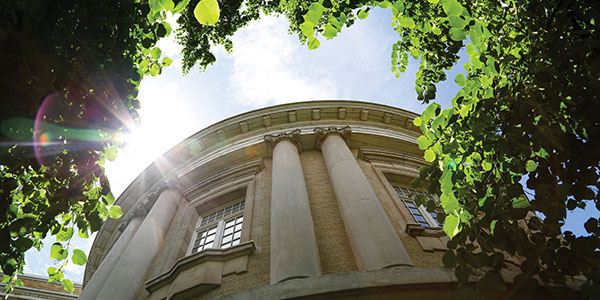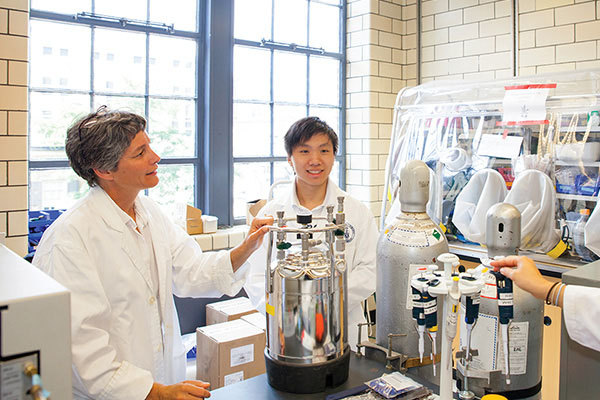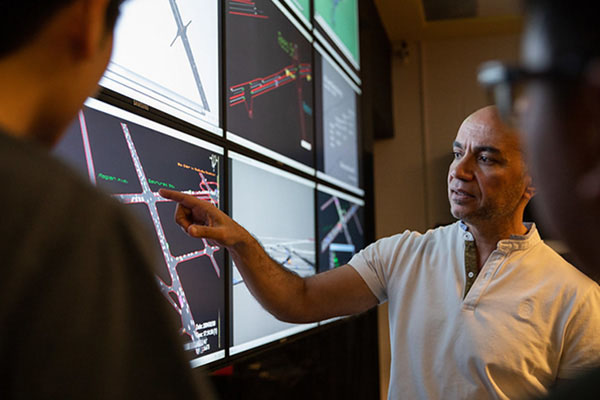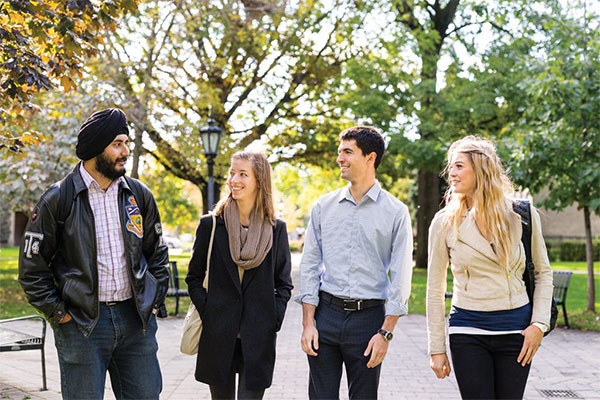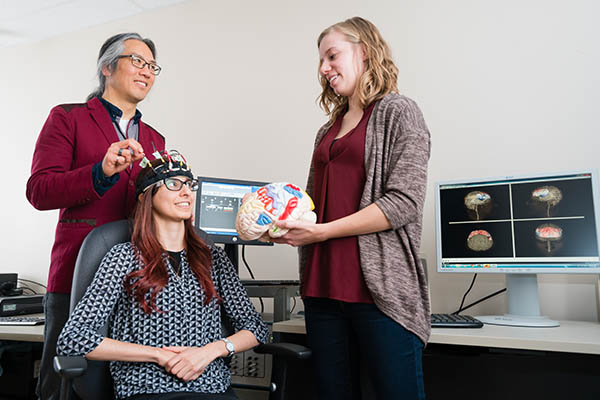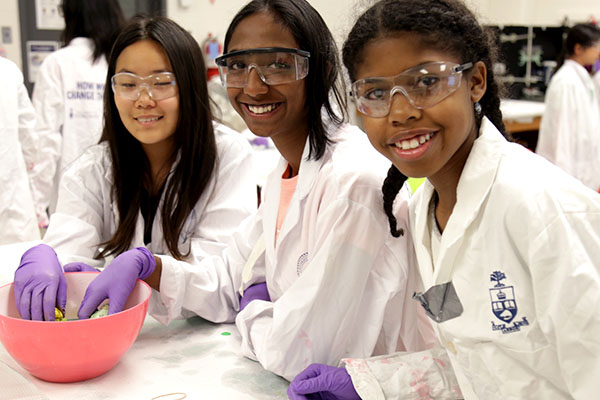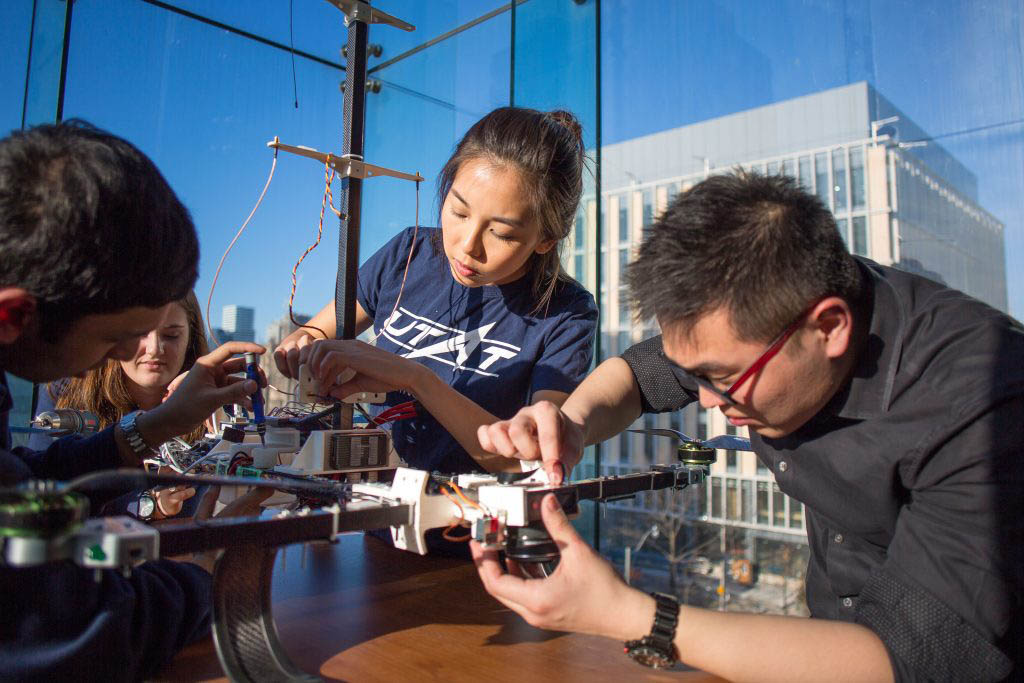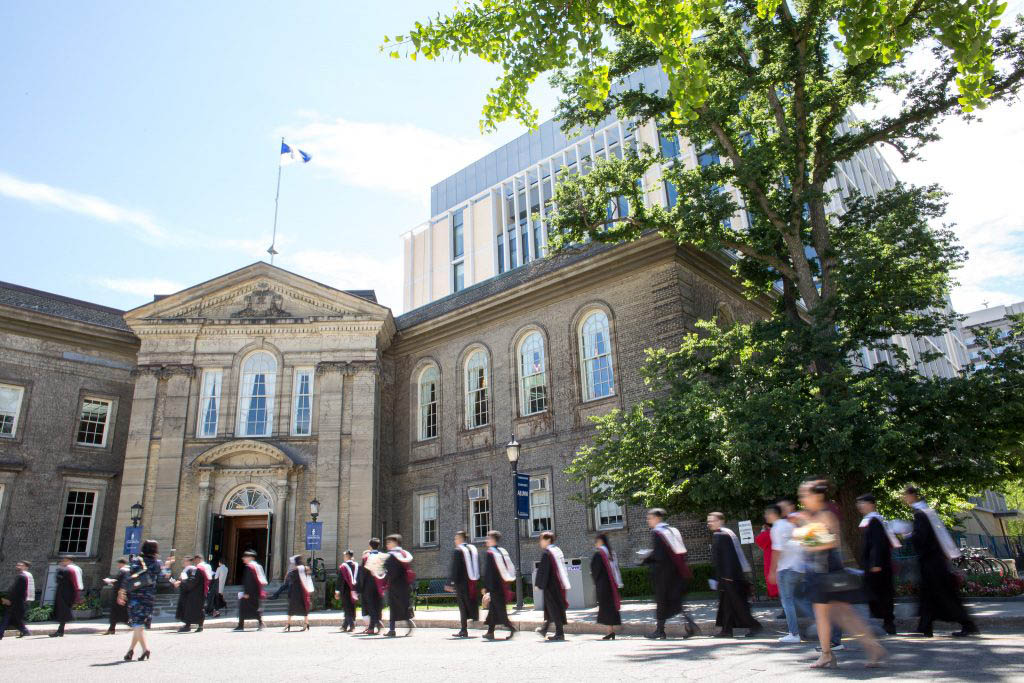The FASE Research Office is pleased to announce the recipients of the 2025-2027 Joint EMHSeed & XSeed Funding Program.
Initiated in 2015, the Joint Seed Program is an interdivisional research funding program designed to promote multi-disciplinary research and catalyze new innovative partnerships between researchers from the Faculty of Applied Science and Engineering and those from outside of Engineering. This year’s recipients will undertake unique and innovative research initiatives ranging from measuring the impact of major flooding events to developing an artificially intelligent neurostimulator to predict seizures.
The FASE Research Office, along with our partner divisions, would like to congratulate the research teams on their success.
XSeed Projects
1. Enhanced Machine Learning Modeling of Micropollutant Removal by Reverse Osmosis Membranes Enabled by Untargeted High-Resolution Mass Spectrometry
Co-Applicants: Jay Werber (ChemE) & Hui Peng (Chemistry)
Reverse osmosis (RO) and nanofiltration (NF) are common water treatment methods to filter out organic micropollutants (e.g., carcinogens) and are essential to the protection of human and environmental health. Due to the presence of millions of micropollutants with diverse chemical structures, it is infeasible to design and test treatments on each compound individually. Current modeling using machine learning (ML) is limited by the poor data quality in existing studies.
Werber and Peng will leverage untargeted high-resolution mass spectrometry to fill this gap. This method enables simultaneous quantitation of ~40,000 chemical species within days. It will be combined with systematic filtration experiments to generate >106 high-quality data-points with varying RO/NF treatments. This large dataset will be used to train a ML model to enable accurate prediction of filtration performance, providing a comprehensive understanding of micropollutant removal and allowing engineers to safely plan water treatment processes.
2. Oníya Wašté: Community Co-led Educational Interventions to Improve Indoor Air Quality
Co-Applicants: Jeffrey Siegel (CivMin), Lindsey Smith (Geography and Planning) & Sarah Haines (CivMin)
Oníya Wašté, Dakota for breathing good air/breathing better, is the guiding motivation for this project. Exposure to particulate matter (PM) can significantly increase upper respiratory issues such as asthma, particularly in susceptible and marginalized populations including children and elderly individuals. Portable air cleaners (PACs) can be a low-cost and practical solution to reduce indoor PM. However, there is often a discrepancy between the anticipated and realized performance of PACs indoors, owing to a lack of effective knowledge translation surrounding their proper use and management.
Working directly with a community partner, Siegel, Smith and Haines will co-develop and implement a community-led educational intervention using PACs to reduce harmful indoor exposures in a First Nations school and evaluate its effectiveness in sustaining reduced indoor PM concentrations and occupant behavioral change. The long-term goal of this project is to improve indoor air quality in marginalized communities using effective evidence-based and community-led interventions.
3. Understanding the Superfluorescence in Lanthanide-Based Quantum Photonic Nanomaterials under Extreme Conditions
Co-Applicants: Kai Huang (MSE) & Xiang Li (Physics)
Lanthanide-based nanocrystals (LnNCs) possess quantum optical superfluorescence (SF), where a large ensemble of emitters coherently generates a short burst of intense cooperative emission. Their unique properties make them a valuable high-quality light source for biophotonic applications and quantum technologies. However, the fundamental understanding of SF in LnNCs remains underexplored, and there is an urgent need to enhance brightness and tunability of SF to unlock diverse applications.
Huang and Li will engineer lanthanide doping to achieve multicolor/lifetime-tunable SF, and exploit extreme sample environments to identify key tuning parameters that enhance SF brightness in LnNCs and shed light on the SF mechanism. They will leverage tools and knowledge from nanoscience and research on matter in extreme conditions to build a solid foundation for applying LnNCs in next-generation photonic applications, including precision sensing, ultrafast optical computing and quantum communication.
4. Measuring Impacts of Major Flooding Events on Communities and Infrastructure in the Greater Toronto Area Using an Interdisciplinary Reconnaissance Approach
Co-Applicants: Trevor Carey (CivMin) & Robert Soden (Computer Science)
Underserved communities in the Greater Toronto Area (GTA) are disproportionately affected by flooding and often lack the economic resources or social support structures necessary for recovery, leaving them vulnerable to future events. While disaster reconnaissance work has been used in civil engineering, this project also incorporates expertise and data collection relevant to public health and the social science of disaster.
Carey and Soden will develop an interdisciplinary reconnaissance team that measures the acute and lasting impacts of flooding events on underserved communities and the built environment across the GTA. They will study past flooding events in the GTA and across Canada; identify communities vulnerable to the effects of flooding and create data collection frameworks and protocols for pre- and post-events, along with community partners; and develop the initial technology infrastructures needed to conduct post-flood reconnaissance in select communities.
5. Microscopic Insights into Earthquake Swarms: Bridging Geophysical Computational Models and Rock Mechanics Laboratory Experiments
Co-Applicants: Giovanni Grasselli (CivMin) & Semechah Lui (Chemical and Physical Sciences)
An earthquake swarm is a cluster of moderate earthquakes occurring over days to months, without a clear mainshock, both in natural and human-made environments such as enhanced geothermal systems and carbon capture and storage projects. These swarms can lead to larger, more destructive events. Understanding their behavior and causes is crucial for assessing seismic risks, particularly as we strive for a sustainable green future. Field seismic data does not adequately capture complex processes deep underground.
Lui and Grasselli will study swarms from a novel microscopic perspective. By combining numerical models and lab experiments, they will explore how small-scale (millimeter-to-centimeter level) events deform and slip to better understand the physical properties and underlying causes of swarms. This will lead to more realistic and accurate earthquake models for predicting seismic hazards, enhancing risk assessments in industrial planning, and guiding safer development practices.
6. AUTONOMA-SIF: Autonomous Drone Systems for Precision Monitoring of Solar-Induced Fluorescence in Vegetation Ecosystems
Co-Applicants: Hugh Liu (UTIAS) & Ingo Ensminger (Biology)
Plants emit a faint glow called solar-induced fluorescence (SIF) that reveals crucial information about their health and photosynthetic activity. Measuring this fluorescence requires complex equipment and expert operators, limiting its practical applications in agriculture and forestry.
Liu and Ensminger will combine cutting-edge SIF sensors with autonomous drone technology to create a system that independently identifies plants of interest, conducts precise measurements, and validates data quality; all processed in automation without human intervention during operation. This innovation will transform environmental monitoring by making advanced plant physiology assessments accessible and scalable. This system will support precision agriculture and monitor ecosystem health and carbon uptake in forestry. It will also provide vital ground validation for satellite SIF measurements, enhancing global vegetation monitoring capabilities essential for addressing climate change.
7. Electrochemical Optimization of Cathode-Electrolyte Interphase (CEI) for Next-generation Lithium Batteries
Co-Applicants: Weilai Yu (ChemE) & Oleksandr Voznyy (Physical and Environmental Sciences)
This project will tackle key challenges in next-generation lithium-metal batteries by enhancing the performance, safety, and longevity of transition metal oxide (TMO) cathodes. TMOs are essential for achieving high energy densities and long cycle life. However, their performance degrades over time due to structural instability, surface reconstruction, and electrolyte-induced oxidation.
Yu and Voznyy propose a novel electrochemical approach to engineering protective, self-healing cathode-electrolyte interphases (CEIs) through controlled electrolyte decomposition under precisely tuned reductive potentials. This represents a cost-effective alternative to expensive fabrication techniques such as atomic layer deposition. The team aims to design CEIs that enhance battery stability and efficiency, particularly under high-voltage operation. This research will drive the development of sustainable, high-performance energy storage solutions for Canada’s growing battery sector, contributing to the country’s role as a global leader in next-generation energy storage and sustainability.
EMHSeed Projects
1. Closing the Loop on Epilepsy: Continually Learning Artificially Intelligent Neurostimulators for Drug-Resistant Seizures
Co-Applicants: Roman Genov (ECE) & Bo Wang (Laboratory Medicine and Pathobiology)
Epilepsy that does not respond to medication can be treated with contingent neurostimulation, a therapy that uses electrical stimulation to abort an anticipated seizure. However, existing neurostimulators lack the advanced machine learning (ML) capabilities to accurately predict seizures and only 10% of patients are rendered seizure-free.
Genov and Wang’s solution is an artificially intelligent neurostimulator that is periodically retrained to optimize its seizure prediction capability. A high-complexity deep learning (DL) model external to the body, known as the ‘teacher’, will train a low-complexity ML model, known as the ‘student’, which will be implemented on an implanted device and thus must be smaller and more energy-efficient. This approach will improve patient-tailored therapy, enable accurate DL-based seizure prediction, and maintain the teacher’s accuracy while using less than 1% of its computational resources and energy.
2. Correlating Kidney Stone Mechanical Hardness with Radiographic Density to Improve Selection and Treatment Outcomes in Patients with Kidney Stone Disease
Co-Applicants: Yu Zou (MSE) & Monica Farcas (Surgery)
Computed Tomography (CT) is the gold standard imaging test used to diagnose kidney stones. The radiodensity of the stone, measured in Hounsfield Units (HU) on CT, is frequently used to predict kidney stone treatment response to extracorporeal shock wave lithotripsy. However, there are no studies that establish a direct causal link between HU and mechanical stone hardness, or direct correlation between HU, mechanical hardness, stone composition and response to other stone treatments (such as laser or ultrasonic lithotripsy).
Zou and Farcas will explore the use of the Vickers hardness (VH) test, a popular method to evaluate a material’s mechanical hardness, to examine and test these different elements. This will allow clinicians to better predict treatment modality success based on pre-operative HU and to tailor stone interventions for patients.
3. Micro/Nanoplastics and Immune Cell Dysfunction: Uncovering the Invisible Threat in Drinking Water
Co-Applicants: Robert Andrews (CivMin) & Slava Epelman (Immunology/Laboratory Medicine and Pathobiology/TBEP)
Petroleum-based plastics are ubiquitous in our workplaces, households, and clothes, and are widely used for transporting food and water. Plastics readily break down into small micro- and nanoplastic (MNPL) particles which accumulate within immune cells in human tissues, potentially triggering a wide range of diseases. Despite increasing interest in this topic – and a reported link between MNPL accumulation in macrophages in aortic plaques and an increased incidence of severe cardiovascular pathology, including heart attacks and strokes – observational studies have not established causation or identified mechanisms that describe which MNPL-interacting macrophages promote disease.
By combining key engineering and biology technologies, Andrews and Epelman will seek to reliably characterize nanoplastics below 1 μm and precisely define which MNPLs exert pathologic effects. This will help comprehensively determine how environmental MNPL physical and chemical properties affect cardiovascular disease risk.



